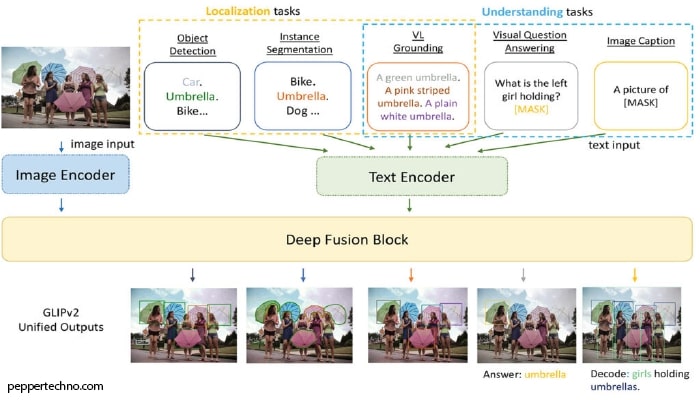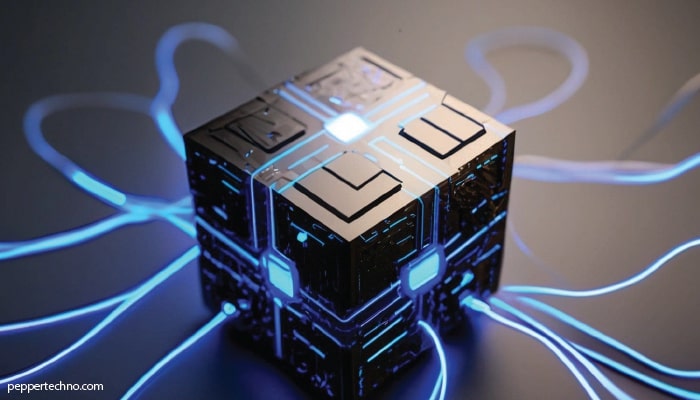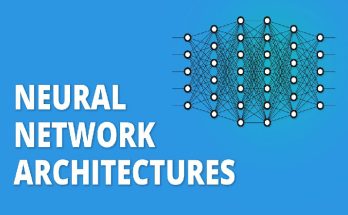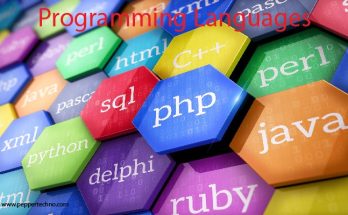What is object detection foundation model means?
Object detection is a fundamental task in computer vision that involves identifying and localizing objects within an image or video. It plays a crucial role in various applications such as autonomous driving, surveillance, medical imaging, and robotics. The ability to accurately detect objects is essential for machines to understand and interact with the visual world. One of the key models used for object detection is the object detection foundation model, which forms the basis for many state-of-the-art object detection algorithms.

Understanding the Basics of Object Detection
Object detection refers to the process of identifying and localizing objects within an image or video. Unlike image classification, which only determines the presence of objects in an image, object detection provides more detailed information by not only identifying the objects but also providing their spatial coordinates. This allows machines to understand the context and relationships between different objects in a scene.
There are several techniques used for object detection, including traditional computer vision methods and deep learning-based approaches. Traditional methods often involve handcrafted features and algorithms such as Haar cascades or Histogram of Oriented Gradients (HOG). On the other hand, deep learning-based approaches have gained popularity in recent years due to their ability to automatically learn features from data. These approaches typically use convolutional neural networks (CNNs) to extract features from images and then apply object detection algorithms on top of these features.
However, object detection poses several challenges. One of the main challenges is the variation in object appearance, such as changes in lighting conditions, scale, viewpoint, and occlusion. Additionally, objects can have complex shapes and textures, making it difficult for algorithms to accurately detect them. Another challenge is the presence of multiple objects in a scene, which requires algorithms to handle object occlusion and overlapping instances.
Introduction to Object Detection Foundation Model
The object detection foundation model is a key building block for many state-of-the-art object detection algorithms. It provides a framework for detecting objects in images or videos by combining feature extraction, region proposal, and object detection networks. This model forms the basis for various object detection architectures, such as Faster R-CNN, YOLO (You Only Look Once), and SSD (Single Shot MultiBox Detector).
The development of the object detection foundation model can be traced back to the R-CNN (Region-based Convolutional Neural Network) algorithm proposed by Girshick et al. in 2014. R-CNN introduced the concept of region proposals, where a set of potential object bounding boxes are generated and then classified using a CNN. This approach achieved significant improvements in object detection accuracy compared to previous methods.
How Object Detection Foundation Model Works
The object detection foundation model consists of several stages that work together to detect objects in an image or video. The first stage is feature extraction, where a CNN is used to extract high-level features from the input image. These features capture the important visual information necessary for object detection.
The second stage is the region proposal network (RPN), which generates a set of potential object bounding boxes called region proposals. The RPN takes the extracted features as input and uses a set of anchor boxes to predict the likelihood of each anchor box containing an object. The anchor boxes are predefined bounding boxes of different scales and aspect ratios that are placed at various locations in the image.
The final stage is the object detection network, which takes the region proposals generated by the RPN and classifies them into different object categories. This network also refines the bounding box coordinates of the region proposals to accurately localize the objects. The object detection network is typically a CNN-based classifier that predicts the class probabilities and bounding box coordinates for each region proposal.
Key Components of Object Detection Foundation Model
The object detection foundation model consists of three key components: feature extraction, region proposal network, and object detection network.
Feature extraction is the first stage of the object detection pipeline, where a CNN is used to extract high-level features from the input image. The CNN consists of multiple convolutional and pooling layers that progressively reduce the spatial dimensions of the input image while increasing the number of feature maps. These feature maps capture the important visual information necessary for object detection.
The region proposal network (RPN) is responsible for generating a set of potential object bounding boxes called region proposals. The RPN takes the extracted features as input and uses a set of anchor boxes to predict the likelihood of each anchor box containing an object. The anchor boxes are predefined bounding boxes of different scales and aspect ratios that are placed at various locations in the image. The RPN outputs the predicted objectness scores and bounding box coordinates for each anchor box.
The object detection network takes the region proposals generated by the RPN and classifies them into different object categories. This network also refines the bounding box coordinates of the region proposals to accurately localize the objects. The object detection network is typically a CNN-based classifier that predicts the class probabilities and bounding box coordinates for each region proposal.
Advantages of Object Detection Foundation Model
The object detection foundation model offers several advantages over traditional object detection methods.
One of the main advantages is its high accuracy. The use of deep learning-based approaches, such as CNNs, allows the model to automatically learn discriminative features from data, leading to improved object detection performance. The combination of feature extraction, region proposal, and object detection networks further enhances the accuracy by effectively capturing and localizing objects in images or videos.
Another advantage is its fast processing speed. The object detection foundation model leverages the efficiency of CNNs, which can be parallelized and accelerated using GPUs. This enables real-time or near real-time object detection, making it suitable for applications that require fast processing, such as autonomous driving and surveillance.
The object detection foundation model also offers flexibility in handling different types of objects. By training the model on a diverse dataset, it can learn to detect a wide range of object categories, including common objects, animals, and even specific objects of interest in specialized domains. This flexibility makes the model applicable to various applications and allows it to adapt to different object detection tasks.
Limitations of Object Detection Foundation Model
While the object detection foundation model offers many advantages, it also has some limitations.
One limitation is its limited ability to detect small objects. The object detection foundation model relies on region proposals to localize objects, and small objects may not generate enough region proposals or may be missed altogether. This can lead to lower detection accuracy for small objects compared to larger ones.
Another limitation is the difficulty in detecting objects with complex shapes. The object detection foundation model uses predefined anchor boxes of different scales and aspect ratios, which may not accurately match the shapes of complex objects. This can result in inaccurate bounding box predictions and lower localization accuracy for objects with irregular or non-rectangular shapes.
Applications of Object Detection Foundation Model
The object detection foundation model has a wide range of applications across various industries.
In autonomous driving, object detection is crucial for identifying and tracking vehicles, pedestrians, and other objects on the road. This information is used by autonomous vehicles to make decisions and navigate safely in complex traffic scenarios.
In surveillance and security, object detection is used to detect and track suspicious activities or objects in video footage. This helps in monitoring public spaces, airports, and other high-security areas to ensure safety and prevent potential threats.
In medical imaging, object detection is used for tasks such as tumor detection, organ segmentation, and anomaly detection. Accurate object detection in medical images can aid in early diagnosis, treatment planning, and monitoring of diseases.
In robotics, object detection is essential for robots to interact with their environment and perform tasks such as object manipulation, navigation, and human-robot interaction. By detecting and localizing objects, robots can understand their surroundings and make informed decisions.
Future of Object Detection Foundation Model
The object detection foundation model is continuously evolving, and there are several advancements and future directions in object detection technology.
One area of advancement is the development of more accurate and efficient object detection algorithms. Researchers are exploring novel architectures, loss functions, and training techniques to improve the accuracy and speed of object detection models. This includes the use of attention mechanisms, feature pyramid networks, and advanced optimization algorithms.
Another area of advancement is the integration of object detection with other computer vision models. Object detection can be combined with tasks such as semantic segmentation, instance segmentation, and pose estimation to provide a more comprehensive understanding of the visual scene. This integration can lead to more advanced applications in areas such as augmented reality, virtual reality, and human-computer interaction.
Conclusion: Object Detection Foundation Model as a Building Block for Computer Vision
The object detection foundation model plays a crucial role in computer vision by providing a framework for accurately detecting and localizing objects in images or videos. It combines feature extraction, region proposal, and object detection networks to achieve high accuracy and fast processing speed. The model has various advantages, including its ability to handle different types of objects and its flexibility in adapting to different object detection tasks.
However, the model also has limitations, such as its limited ability to detect small objects and its difficulty in detecting objects with complex shapes. Despite these limitations, the object detection foundation model has a wide range of applications in autonomous driving, surveillance, medical imaging, and robotics.
The future of object detection technology holds promising advancements in accuracy, efficiency, and integration with other computer vision models. Further exploration and development of object detection algorithms will continue to push the boundaries of what machines can perceive and understand in the visual world.



